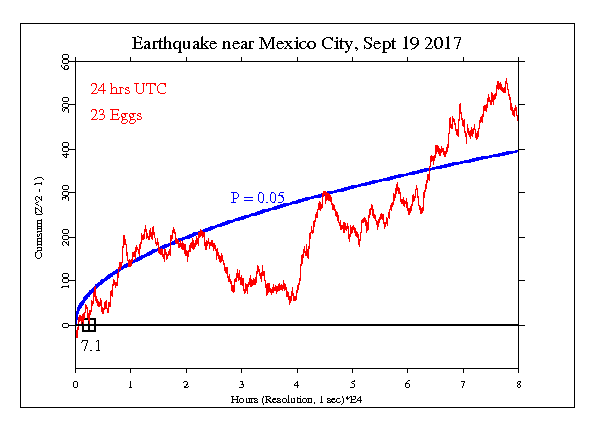Mexico City Quake, Sept 19 2017
Another powerful earthquake has struck Mexico as a 7.1 Richter temblor about 75 miles southeast of Mexico City. At this time there are reports of at least 116 dead, and 28 million people are impacted. The death toll is expected to rise as the rubble of many building is cleared. By Wednesday morning the count is 217 and is still expected to grow. The quake hit in the afternoon at 1:15 p.m. CDT, the middle of the day.
At the same time, the most recent Atlantic hurricane Maria is hitting the Caribbean islands as a category 5 with 175 mhp winds. About the time of the quake, Maria was devastating Dominica or other small islands. It is headed for Puerto Rico and expected to hit with Cat 5 force early tomorrow (Wednesday).
In Mexico City, scores of buildings collapsed into mounds of rubble or were severely damaged in in densely populated parts of the city and nearby states. Mayor Miguel Angel Mancera said 44 buildings collapsed in the capital alone.
Mancera said at least 30 had died in Mexico City, and officials in Morelos, just to the south, said 54 had died there. At least 11 others died in Puebla state, according to Francisco Sanchez, spokesman for the state's Interior Department. Gov. Alfredo del Mazo said at least nine had died in the State of Mexico, which also borders the capital.
The quake came less than two weeks after another quake left 90 dead in the country's south, and it occurred as Mexicans commemorated the anniversary of a 1985 quake that killed thousands.
Specific Hypothesis and Results
This event or combination of events certainly is a focus of worldwide attention and feelings of compassion. While hurricanes are continuous over days, the quake is well defined in time. FOr this exploratory analysis, we set the beginning of the event on the hour, about 15 minutes before the main temblor, with a duration of 8 hours. This is 19:00 on the 19th to 03:00 on Sept 20, UTC. If this were a formal event, it would have Z = 1.938 and p = 0.026.
Interpretation
The following graph is a visual display of the statistical result. It shows the second-by-second accumulation of small deviations of the data from what’s expected. Our prediction is that deviations will tend to be positive, and if this is so, the jagged line will tend to go upward. If the endpoint is positive, this is evidence for the general hypothesis and adds to the bottom line. If the endpoint is outside the smooth curve showing 0.05 probability, the deviation is nominally significant. If the trend of the cumulative deviation is downward, this is evidence against the hypothesis, and is subtracted from the bottom line. For more detail on how to interpret the results, see The Science and related pages, as well as the standard caveat below.

Standard caveat
It is important to keep in mind that we have only a tiny statistical effect, so that it is always hard to distinguish signal from noise. This means that every success
might be largely driven by chance, and every null
might include a real signal overwhelmed by noise. In the long run, a real effect can be identified only by patiently accumulating replications of similar analyses.
